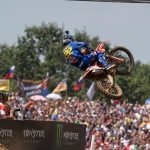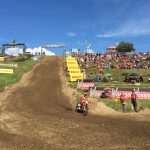After judgement on the top five riders of the MX2 class of the 2017 FIM Motocross World Championship in the last issue now its time to turn the light on MXGP. It was a campaign largely free of the injury drama that had left such a mark on 2015 and 2016 (although Tim Gajser might disagree) and produced six winners from nineteen rounds with a total of fourteen different athletes picking up a podium trophy at some point; three of which for the first time on a 450. There were seven winners and eleven ‘podiumees’ in 2016. This year was certainly a milestone for KTM: their first title for the 450 SX-F and first ever one-two in the premier class.
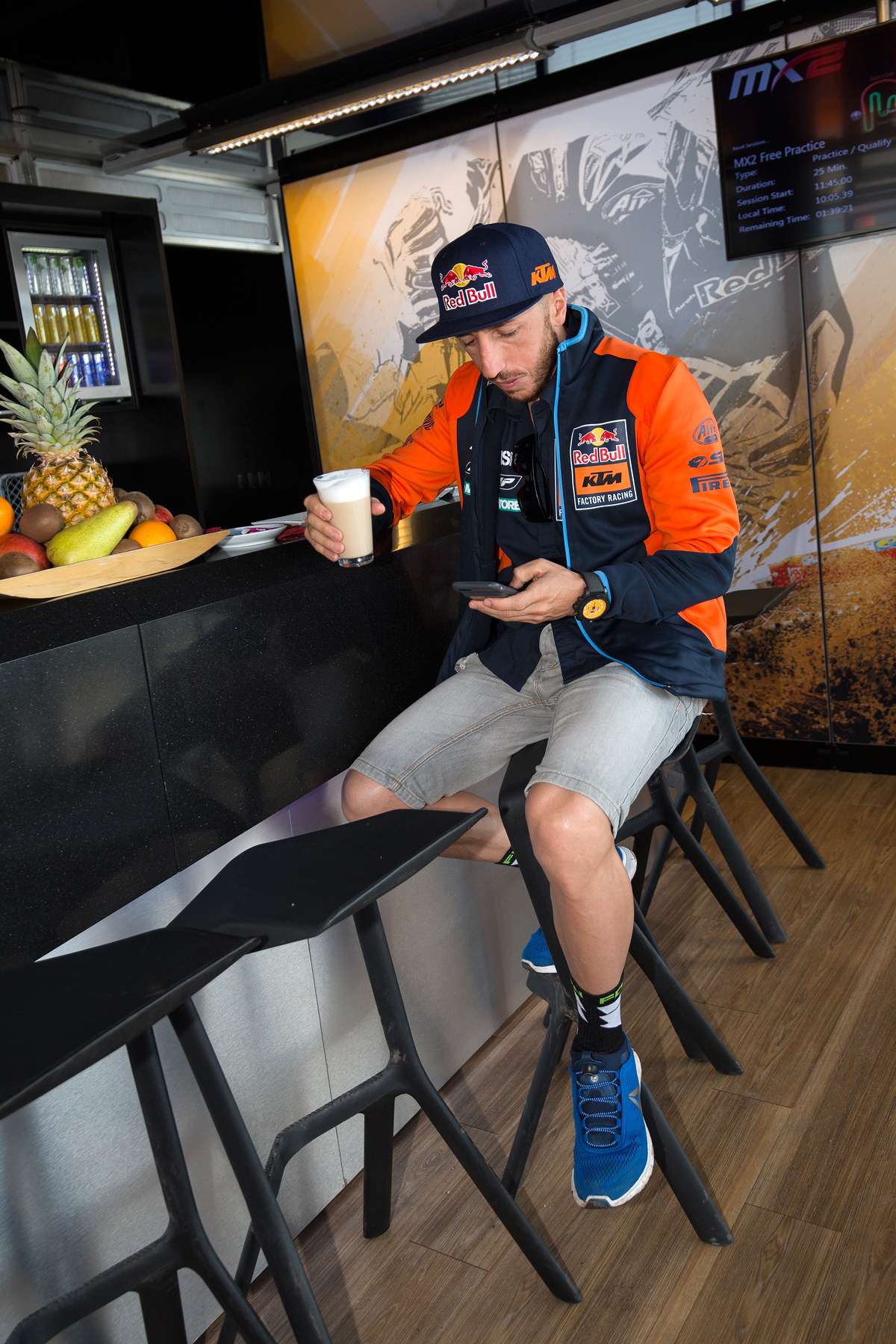
1. Antonio Cairoli
Red Bull KTM, Italy, 1st
Even though I’ve ruminated on this in the MXGP Blog, realistically, there was no other choice for 2017. Tony Cairoli came into the year thirsty from his ‘driest’ spell in fourteen seasons of Grand Prix but fit, flying and finally happy with the set-up of the 450 SX-F after deliberating between his trusty 350 and the extra engine power (perhaps not the wisest move in the midst of a GP campaign) in 2015 and also 2016. “We saw in the wintertime that he would be the guy to beat this year…” said Team Technical Co-ordinator Dirk Gruebel recently. Cairoli had owned MXGP from 2009-2014 (and from 2010-2014 with KTM). He broke his arm in 2015 and wrecked his neck and shoulder in pre-season in 2016 (but still won three rounds and finished runner-up). #222 was rapid in the first months of 2017 and swept the three-fixture Italian Championship to such an extent that we Blogged back in February that he’d be the pace-setter at Qatar; a track at which he’d never won. Cairoli went 1-1 at Losail (admittedly against a sick Gajser) and signalled his intentions but he curiously missed the podium for the next two races (the swamped Indonesian Grand Prix was an anomaly). Second place at round four for the Mexican GP was more like it, and then his amazing victory at Arco di Trento was the catalyst for eight trophies in the next ten events – four of those victories. It was a period of spoils that extended his lead in the standings to the point where he was able to switch into ‘title mode’ (indeed, after Switzerland he only appeared in the top three once more from the last four outings). Cairoli is ten years older than rivals like Gajser and Herlings but his trio of triumphs in the heat of Ottobiano and Agueda and then at Loket – a track he openly professes to hating – for rounds eleven, twelve and thirteen was the final thrust to a ninth world crown. It was not his most dominant campaign and there was no regular, standout threat until Jeffrey Herlings found his feet but 2017 was about holding his head high against all the judgements that this irrepressible force of Grand Prix was ‘done’. A healthy and happy (and motivated) Tony Cairoli is a monolith of motocross and can never be discounted. Combined with the rapier starts of the 450 SX-F then #222 was again a competitive package. Expect more of the same in 2018 where the prospect of equalling Stefan Everts’ total of ten championships is a pretty big carrot on a string. Tony might not be able to match the zeal of Herlings, Gajser or Febvre on any given weekend – and there will be a record twenty of those – but there is nobody smarter or better in constructing an assault for the bigger prize.
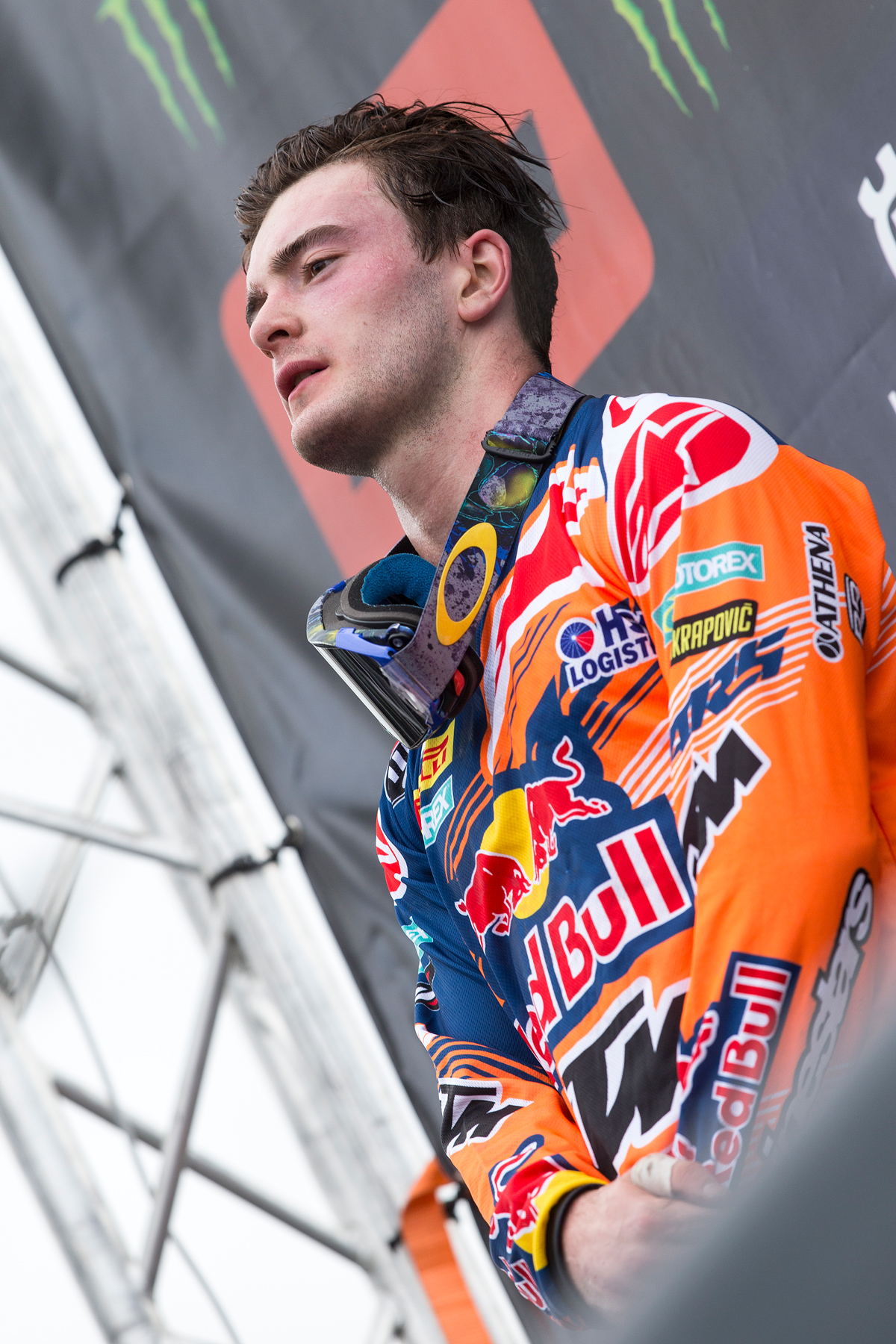
2. Jeffrey Herlings
Red Bull KTM, Holland, 2nd
In practice before the Grand Prix of Europe, round six of the MXGP season, in the sand of Valkenswaard, Holland (scene of his first victory as a fifteen year old in 2010 and site of an unbeaten GP streak ever since) I asked Jeffrey Herlings if he was in crisis. The Dutchman’s right hand was the size of a large apple in his maiden race in the premier class at Qatar less than two months earlier and had since improved but he had yet to appear on the podium and was staring at his longest ever trophy-less spell as well as realisation that he’d underestimated the competition after so much dominance in MX2. He smiled, and then gave a very honest and humble admission of misjudgement. Valkenswaard had come around at a good time. “If I cannot get on the podium here then I will be really worried,” he half-joked. A visibly relieved #84 walked the second step of the box that day after two motos in the dark sand but still hadn’t scooped the chequered flag with the 450 SX-F. Twenty-two at the start of 2017; Herlings dealt with the blow from his hand, the mental reorientation to raise his game and wobbled through some insecure (misplaced) feelings when he believed his chief target – Cairoli – was KTM’s preferred bet for the title. It was a ‘busy’ time until May and his long-awaited breakthrough with a 1-1 in Latvia. From round six of nineteen in the Netherlands Herlings would only be absent from a rostrum celebrations three times in the rest of the year. Latvia was the first of a Cairoli-equalling six wins for the season and he chased his teammate damn hard in the final phases of the calendar; his slim hopes only really eroding with a broken chain in Sweden for round sixteen. His confidence was boosted by that sensational wildcard appearance and success in the last fixture of the AMA Lucas oil Pro Motocross series and his international profile hit new heights: Jeffrey was arguably the biggest motocrosser in the world at that point. Herlings’ rate of performances and results easily marked him as the fastest racer in the latter stages of 2017 even if his starts were still not good enough or consistent enough to make life considerably easier for himself. He did eventually reach his MX2 form and confidence levels and that is a prospect to scare any of his rivals in MXGP next year. Jeffrey is a slightly odd athlete; he typically arrives at the last minute to Grands Prix and is often away on the first available flight, seeks privacy and solace in a pair of permanently placed sunglasses and dresses a little against the notion of a corporate factory rider. He is also accessible, friendly and leans on his KTM crew like a family for assurances both technical and emotional. He is a phenomenal racer – strong and courageous and with seemingly very few weaknesses. Enjoy the sight of him in 2018.
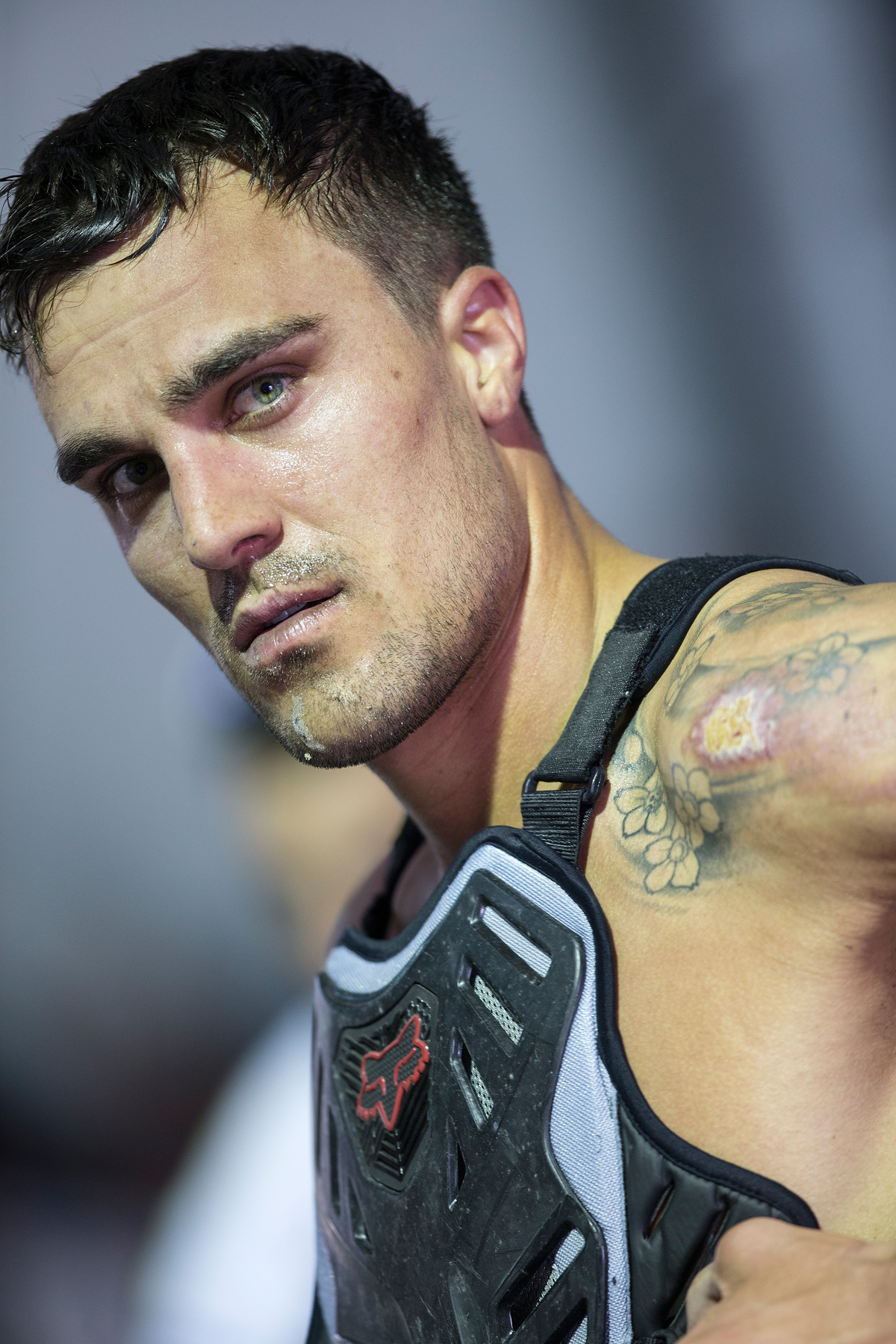
3. Gautier Paulin
Rockstar Energy Iceone Husqvarna Factory Racing, France, 3rd
Whether through injury or silently-suffered technical set-up woes, Gautier Paulin has weathered several seasons of turmoil but 2017 was about creation of a platform of comfort, confidence and results to at last be a strong title contender. His signature with the Rockstar Energy IceOne Husqvarna team was met with quiet optimism. He had raced with factory Yamaha, Kawasaki and HRC efforts and on each occasion had been missing the last final details or magic ingredient to run hard with the likes of Cairoli, Febvre or Gajser (the three championship winners since the start of the decade). Team Manager Antti Pyrhonen slotted the charismatic Frenchman into a diligent and carefully ordered training and preparation programme and Paulin responded. Seven podium finishes represented four more than 2016 two over 2015 and three more than he managed in 2014. For the second time in the last three years Valkenswaard was a happy hunting ground for GP21 and meant a fourth premier class win with four different manufacturers. Crucially Paulin appeared nearer the front of motos for longer and more frequently in 2017. At times he was upstaged by rookie teammate Max Anstie but he was also far more consistent than the young Brit; a positive appraisal that couldn’t be given in previous years. 2017 seemed to be a term where Gautier lost a little of his hype. He was quieter, less prevalent in the media and seemed to acknowledge that it was time to make some moves, in case that dreaded tag of ‘best never to win a championship’ started to hover near. Nearly 28 at the start of the 2018 he has arguably never been in a better set of circumstances to funnel that talent and evident passion for his sport into life-defining achievement. As if to prove that there are fewer riders better at excelling on one day or when the pressure is at it’s heaviest then Paulin was again a figurehead for the French at the Motocross of Nations and another successful defence. If he can make eighteen-nineteen-twenty ‘mini Nations’ in 2018 then he will at last find some feeling of destiny.
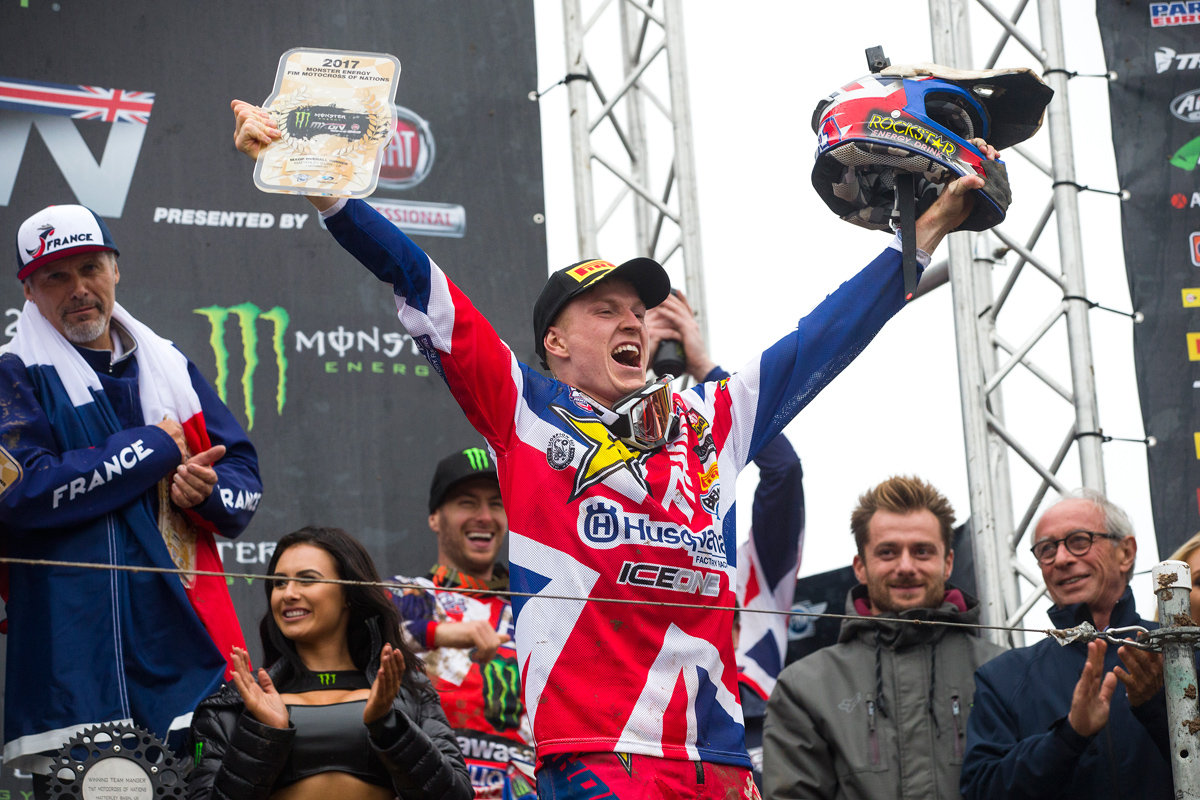
4. Max Anstie
Rockstar Energy Iceone Husqvarna Factory Racing, GBR, 9th
At last. Max Anstie found a ‘home’ in Grand Prix after moving around six teams and five manufacturers in seven years. We’re putting Max in the number four slot simply for the rate of progress he made in his debut season on the FC450 and in the premier class. He came into MXGP as a ‘nearly man’ of MX2, renowned for superlative technique but as something of a rough diamond that could be hard to predict. As he revealed in our exclusive interview in OTOR 165, Anstie merged seamlessly with the rigid guidelines and faultless support system of the IceOne crew and bloomed as a Grand Prix winning athlete because of his surroundings. Max had the best of both worlds on the factory Husky: Max Nagl and Gautier Paulin bore the pressure of needing to deliver results due to their pedigree thus allowing him to learn and develop on the outskirts of the radar…at the same time his saddle on one of the most resourceful teams in the paddock meant he could not slack-off or ignore the timesheets completely. MXGP has been enthralled to rookies in recent years – Gajser and Febvre setting a new bar of expectation – and Anstie was also lucky that a fair share of the early ‘drama’ in this aspect centred around former MX2 rival Jeffrey Herlings (Max even missed two rounds due to an ankle injury and didn’t begin to trouble the top five until the tenth Grand Prix of the year). In the second half of the campaign however he began to have a heavier influence and even showed Paulin – and certainly the off-form and unfortunate Nagl – the fastest lines on a more frequent basis. Anstie has credited the team repeatedly in his education for MXGP racing and the transition from a 250 riding style; he showed promise in the sand of Ottobiano (round eleven) for a first podium finish but really started to peak in the final weeks of the season with a rostrum double in Assen and Villars sous Ecot and then that unforgettable Motocross of Nations performance. Rather than just show his cards, Max flipped them onto the table with abandon at the end of 2017. More than any other time in his career the microscope will swivel firmly onto his efforts in 2018, and due to the speed and confidence with which he bookmarked the season then he’ll travel to Argentina almost equal billing with Paulin; for that reason he makes the top grade.

5. Clement Desalle
Monster Energy Kawasaki, Belgium, 4th
Just shading Tim Gajser, Clement Desalle made a welcome return to the staple position of ‘championship candidate’ in 2017; a status the often-luckless Belgian has filled each season since 2010. Gasjer was bitten by the injury and bad luck he managed to dodge during 2016 and although he was the third most-winningest athlete of the year (three victories) he also made mistakes and paid for them. Desalle took a slightly different mindset into his second term with the factory Kawasaki team and at last seemed settled on the KX450F. He scored two podiums off-the-bat and posted solid points up until round six and a disappointing sixth Grand Prix in Holland. Clement fired back to win in France and Russia and it was encouraging to see signs of that fiery athlete that was the scourge of the premier class and Tony Cairoli’s biggest headache ay the start of the decade. Perhaps two things frustrated Desalle in 2017: he was often dismayed by the state of some of the new-build tracks, and a propensity to seek and obtain top five results meant a few too many fourth positions for his liking (four occasions). He was one of the few riders on Japanese machinery to regularly strive against the starting prowess of the KTMs and Husqvarnas. Desalle blends a very watchable riding style that at once appears to be so smooth but can then also be very reactive and almost aggressive. Maybe some more of that aggression would have paid dividends in 2017 but #25 has been hurt too much and come close to the top prize several times to know what strategy works for a calendar that does not cease to expand year-on-year. MXGP is richer for a straightforward racer like Clement and having studied and seen Febvre and Gasjer in 2015 and 2016 and watched Cairoli’s renaissance – even with Herlings’ challenge – in 2017, he must know that he still has a lot to say in the premier class dispute.
Photos by Ray Archer

